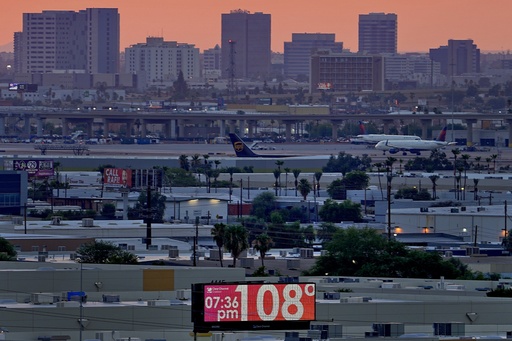
PHOENIX — This week marked the end of Phoenix’s annual six-month warm season, coinciding with an extraordinary autumn heat wave that affected the Southwest. For the first time in recorded history, daily temperatures in Phoenix surpassed 110 degrees Fahrenheit (43.3 degrees Celsius) four times in October, making it the hottest city in the United States during this period.
According to the National Weather Service, this prolonged heat wave has pushed Phoenix to achieve a remarkable total of 70 days where temperatures either reached or exceeded 110 degrees. Previously, the record for the latest day of such extreme temperatures had been September 19, 2010. With the season changing, meteorologist Sean Benedict noted, “We are now done with the extreme weather, but we may not necessarily be done with the records for the year.” He added that although cooling trends are expected, temperatures could still hit 100 degrees next Thursday.
The Arizona State Climate Office expressed optimism that the recent wave of record-setting temperatures might be reaching its conclusion, sharing on social media that Phoenix recorded 19 new temperature records alongside two ties. Tucson also experienced 18 new records while Flagstaff set 10 new records, with many of these new marks being surpassed by several degrees.
This Friday, the high temperature in Phoenix was predicted to be around 79 degrees Fahrenheit (26.1 degrees Celsius), with cooler weather expected to prevail throughout the weekend and into the next week.
In terms of health impacts, Maricopa County public health officials have reported 389 confirmed heat-related deaths this year, with an additional 292 cases currently under investigation for potential heat-related causes. Last year, the county documented a total of 645 heat-related fatalities within its population of approximately 4.5 million, which includes Phoenix.
In Pima County, located in Arizona and home to Tucson, there have been 131 heat-related deaths confirmed so far this year, as reported by the Medical Examiner’s Office. Meanwhile, Nevada’s Clark County, which includes Las Vegas, reported that heat was a contributing factor in at least 402 deaths as of mid-October.
As for New Mexico, the reported figures on heat-related deaths are lagging by three months and do not account for the peak heat months; however, emergency rooms reported 957 cases of heat-related illnesses as of this Friday.
Additionally, the University of New Mexico’s Office of the Medical Investigator has been dealing with a concerning tenfold increase in presumed migrant deaths at the U.S.-Mexico border over the past two years, a significant number of which are attributed to heat-related conditions.
